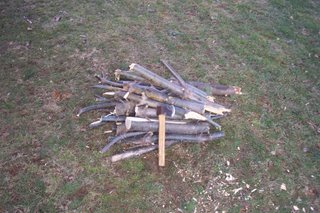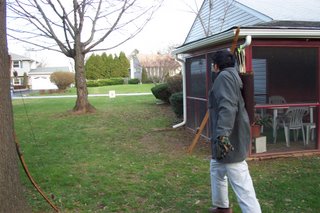
So the next day, we decided to take a trip to the Indian Ruins at Tuyusan. Now, it is without doubt that the environment of the canyon is rather inhospitable to human life. There simply is not enough rainfall here to support large populations of either human or animal life. The geography of the region is also rather daunting, it's filled with steep ravines, deserts, and mesas. In fact, the immediate surroundings of the canyon somewhat resembled the past martian landscapes that one reads about in science fiction novels. I can imagine just how difficult it would be to transport raw materials and goods across even short distances here. For stone age peoples, a high material culture would hardly be sustainable from such a barren resource base. Yet, the Pueblo tribes that inhabited this area in the 1600s were inheritors of considerable cultural sophistication.

When European explorers first reached the area, they encountered groups of Pueblo dwelling tribes which, among others, included the Hopi, the Zuni, the Navajo, and the Hosni. Now these tribes built relatively sophisticated multi-level buildings from sun baked mud and stone. Their pottery and jewlery making technology was literally centuries ahead of the tribes around them. But the most interesting technology was that of the solar calendar. These primitive peoples built a solar calendar out of stones and used that calendar to synchronize their plant growing seasons. Now, sophisticated pottery and precise solar calendars don't usually come to primitive stone age tribes, actually they almost ever do. But in the case of the pueblo builders, their material culture benefited from a neighboring high-culture that has unfortunately dissapeared from history.
Some 1000 years ago, the landscape of northern Arizona was a bit wetter than it is now. South of the modern day Pueblo builders, there existed a high culture of great sophistication, the Anasazi. Now the Anasazi built large cities fed by spring water. Their original center at Chaco Canyon had enormous forests of cedar trees. With such a resource base, the Anasazi had the material wealth to build up their culture and technology. Over centuries, their cities and settlements expanded in all directions until they reached the Grand Canyon in the North, and the salt river in the south.

Their agricultural system was of course entirely unsuitable for the environment that they lived in, but during that period of benign conditions, their unsustainable methods would've produced the kind of manpower that allowed them to expand their culture far and wide.
In anycase, the Anasazi civilization eventually expanded to dominate the tribes of the Grand Canyon. In the process of expansion, they gained the resources to develop a stratified society of priests, kings, craft specialists and peasants. It was during these period of growth and expansion that the "advanced" technologies such as gold/turquoise jewlery, slipcast pottery, solar calendars, and multi-level buildings were developed. It was also during this time that the Anasazi elite gained a taste for treating themselves to the benefits of "civilized" society. Benefits such as huge palaces and temples with scores of rooms, expensive jewelery with thousands of precious stones, and of course, lots and lots of slaves.

Needless to say, the Pueblo cultures supplied the Anasazi hegemon with timber, chert, turquoise, goats, slaves, and other natural resources that the Canyon provided. In exchange, these tribes gained a measure of the cultural and technological sophistication from their southern neighbors. Unfortunately, the Anasazi completely deforested the areas under their immediate political control. The trees and shrubs which had served the vital purposes of water retention and soil enrichment were largely gone by the 1300s.
When the severe droughts of that century hit, the Anasazi high civilization collapsed into anarchy and cannibalism. Within a generation, the Anasazi were gone. Their cities and temples remain as a silent testament to their greatness...and foolishness. The pueblo cultures survived the disaster however. By using a combination of sustainable dry bed agriculture, hunting, and gathering, they weathered the massive climate change. By keeping their population in check, they never deforested their environment to the point where water retention became impossible. In the wake of the Anasazi collapse, the entire region swept into a kind of dark age. Tribes of cannibals from the plains states to the north swept down the now depopulated region and devastate the few surviving settlements. The Pueblo cultures largely survived the ordeal due to a combination of their harsh environment and superior technology. While there is much to be said for greatness and ambition, it would appear that in the case of this area, humility translates into long term survival.

When I picked up some local pueblo pottery from the Indian gift shops, the sophistication of the culture that inhabited this land a thousand years ago really stood out. It is up to us to make sure that our culture doesn't suffer the same fate as that of the Anasazi. Perhaps a degree of long term consideration should be factored into our daily decisions. This has been a very educational trip indeed!

